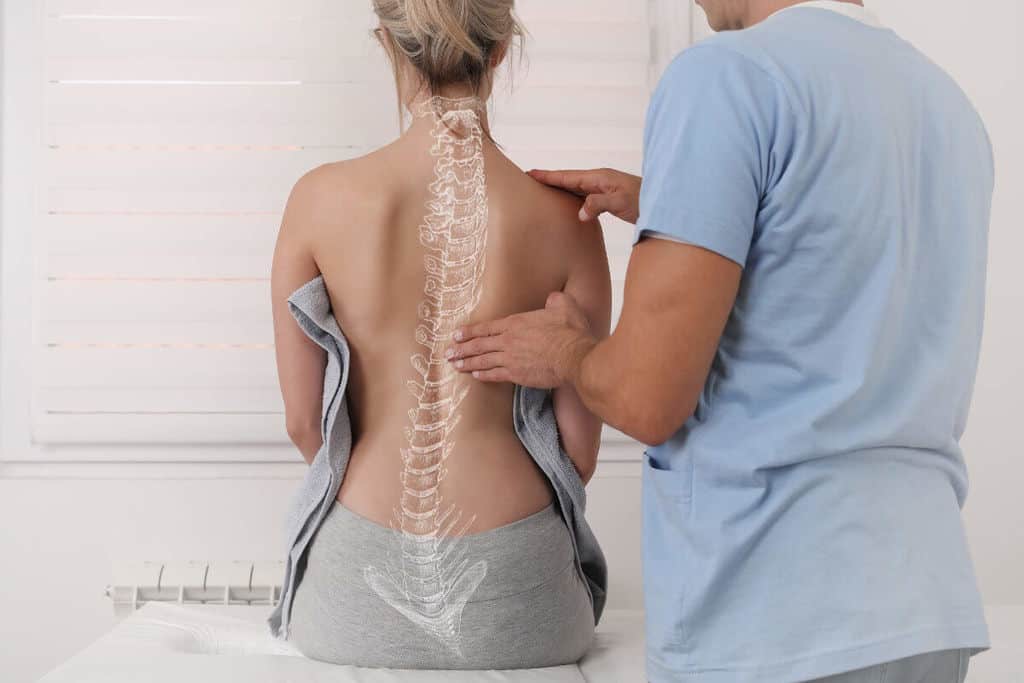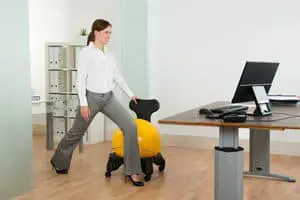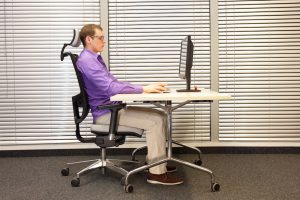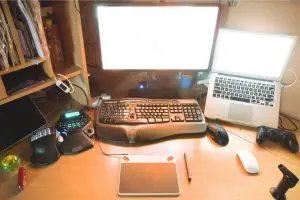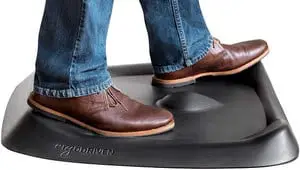Did you know that scoliosis affects around 3% of the American population? That’s around nine million people that have to deal with this medical condition, according to the American Association of Neurological Surgeons (AANS).
While most individuals with scoliosis don’t require surgery, you are more likely to endure back pain and have trouble breathing regularly. Simple things, like figuring out how to sit with scoliosis, can be a challenge, especially when you need to sit at work for a living.
How to sit in a chair with scoliosis? The best way to sit in a chair with scoliosis is to sit back into your chair while keeping your back straight. Refrain from sitting on the edge of your seat and keep the pelvis neutral, not tilting forward or backward. Additionally, you can perform the Thoracic Extension while sitting to help release some of the tension, especially when trying to sit in a chair with scoliosis.
Nonetheless, there are certain measures you can take to fight the discomfort and prevent further damage. In this post, we will take a closer look at how to sit in a chair with scoliosis. After all, it’s the little things that make a big difference in our daily lives.
All content and media on Office Solution Pro are created and published online for informational purposes only. It is not intended as a substitute for professional medical advice and should not be relied on as health or personal advice. This post may contain affiliate links.
Tell me, what is Scoliosis?
Scoliosis is a medical condition that causes the spine (the backbone) to curve to one side. According to WebMD, anyone is diagnosed with scoliosis when the spine forms a curve, usually described by a “C” or “S” shape, more than 10 degrees.
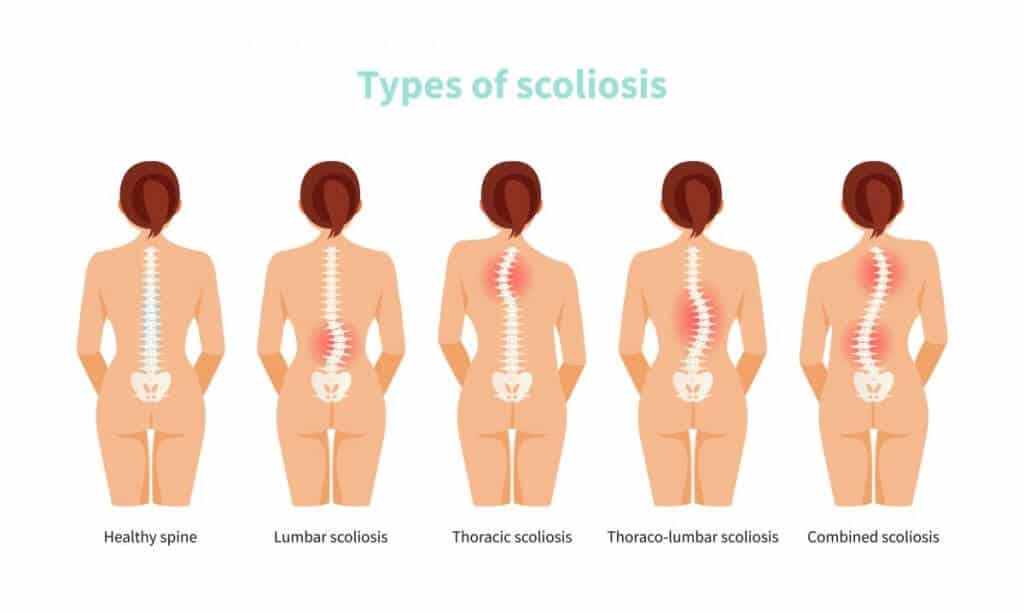
Scoliosis often happens to children. Usually, treatment is unnecessary as the spine corrects itself through natural growth. However, some severe cases require treatment that includes physical therapy and braces. Worse cases may require surgery. Depending on how you sit in a chair with scoliosis, the condition may improve or worsen.
What Are the Symptoms of Scoliosis?
According to SPINE-health, there are two main categories of scoliosis, the first is structural scoliosis and the second is nonstructural scoliosis. While nonstructural scoliosis is a temporary condition that can be fixed, structural scoliosis is a permanent condition acquired through birth, injury, or certain diseases.
While symptoms vary depending on the severity of the condition, these are the common symptoms of scoliosis:
- Uneven hips
- One shoulder blade is higher than the other
- Back pain
- Difficulty breathing (because of the reduced area in the lungs)
The Causes of Scoliosis?
According to the Mayo Clinic, scoliosis happens the most during the growth spurt of a child, just before puberty. While many things contribute to this condition, the cause of most scoliosis cases is unknown. Here are some possible causes of scoliosis:
- Congenital scoliosis – acquired by birth
- Neuromuscular conditions – developed due to nerve abnormalities
- Syndromic scoliosis – developed as part of another disease
- Osteoporosis – formed through bone degeneration
- Specific genes – developed from either parents’ genes
- Leg length – developed if one leg is longer than the other
- Other causes – formed due to bad posture or injuries
About 3% of adolescents have scoliosis. While most cases are mild, some spine deformities can worsen as the children grow. Luckily, there are some tips on how to sit in a chair with scoliosis, which may help in reducing the adverse effects of the condition.
Best Way to Sit with Scoliosis
We understand that it can be hard to maintain proper sitting posture, especially when you have an unnaturally curved spine. But it’s important to do your best. By slouching or leaning to one side, you may cause more problems than the initial one. Here are the best ways to sit with scoliosis:
1. Understand Proper Posture
The best sitting position for scoliosis is to try to sit back in your chair while keeping your back straight. Imagine leaning flat against a wall with your chin parallel to the floor. Because most people who suffer from scoliosis have one shoulder higher than the other, the goal is to achieve equal weight distribution.
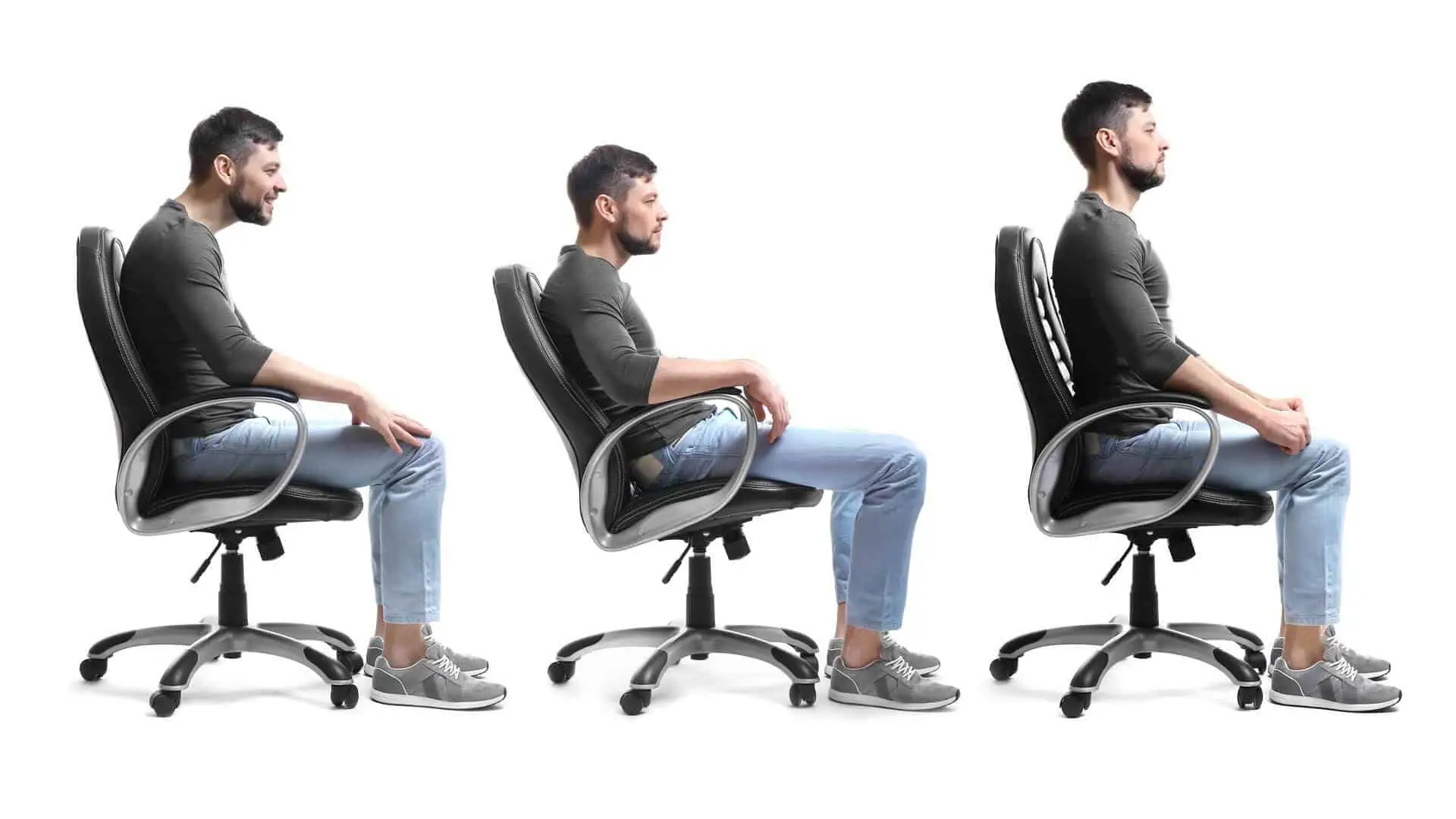
The best ergonomic office chair can help you to sit with proper posture, removing pressure from your lumbar spine.
By making sure your weight is equally distributed, you also avoid tilting your pelvis forward or backward. Something else to keep in mind is to have your knees lower than your hips while having both feet flat on the floor. Having your feet hanging while you sit may put unnecessary tension in your lower back.
This may come as a surprise to you, but avoid crossing your legs to help achieve better alignment while sitting. Not only is it bad for your posture, but crossing your legs may contribute to lower back pain, according to Dr. Richard Arrandt, a chiropractic physician.
2. Sit in Comfortable Chairs
Sitting on certain chairs like soft sofas or armless desk chairs can be a nightmare for anyone dealing with scoliosis. The right ergonomic office chair is the best option for your spine health. Having an office chair that caters to your needs can help you become aware of slouching while working for long hours.
If you don’t have the ability to change your office chair, you can opt for an orthopedic seat cushion to help you find better comfort and proper alignment. Because everybody is unique, it’s best to find what works for you personally, especially when sitting.
3. Perform Desk Exercises
Moving frequently while working is a great way to prevent stiff muscles.If you are required to spend long hours sitting at a desk, a great tip to deal with scoliosis is to perform simple desk exercises. Here’s a simple exercise called the Thoracic Extension:
To perform this movement, start by leaning over the back of the chair with your head looking forward. Stretch your entire back against the back of the chair with your hands touching the opposite side of the shoulders, forming an X. Hold this position for 10 to 30 seconds.
Performing this light exercise at 30-minute intervals is a great way to release some of the tension caused by prolonged sitting, especially when dealing with scoliosis. Doing this consistently may prevent back pain when sitting and improve your condition in the future.
Related Questions to Scoliosis
1. Is sitting or standing better for scoliosis?
It’s been well-documented too much sitting is bad for you, with or without scoliosis. With that said, standing for too long is also not a good idea. The best solution is to incorporate stretches and physical movement, approved by your doctor or physician, in your workday.
It doesn’t matter if you sit or stand; too much of anything is bad for you. Nonetheless, if you are required to sit or stand while working, it’s important to understand proper posture to achieve equal weight distribution. The best office chairs for scoliosis are designed to encourage optimal sitting posture.
2. Can you have a good posture with scoliosis?
Yes, you can have good posture after you’ve been diagnosed with scoliosis; however, this depends on the severity of your condition. Your treatment is always made on an individual basis. This is based on different factors, including sex, severity, curve pattern, and location of the curve, among others.
The two most common treatments to deal with scoliosis are braces and surgery. Braces can be used to treat moderate scoliosis, while surgery may be suggested to treat more severe cases. We advise you to consult your doctor or physician to get a proper diagnosis and treatment.
3. What happens if you do nothing for scoliosis?
Mild scoliosis may not need treatment. However, if you do nothing to treat moderate or severe scoliosis, you may experience increasing deformity. Depending on your condition, severe cases can lead to lung and heart damage as the spine curves sideways. Get it checked sooner; the better the chances of recovery.
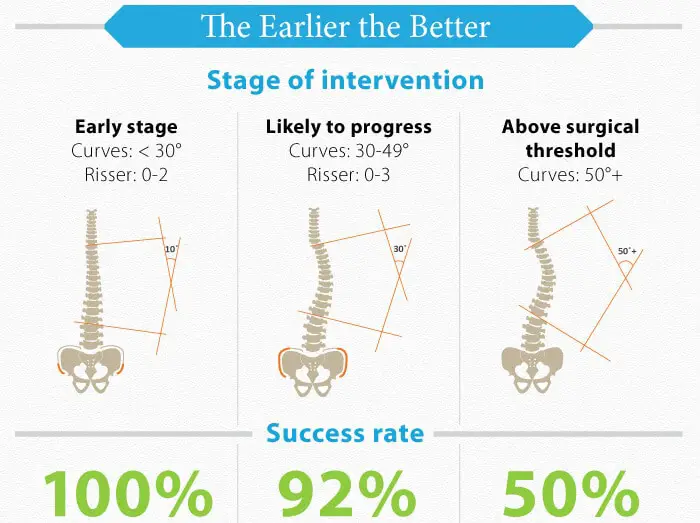
Image sourced from ScoliSMART Clinics.
4. What should I avoid if I have scoliosis?
According to Medical News Today, there are certain activities to avoid when dealing with this medical condition. Some of the things you should avoid if you have scoliosis are:
- Neck bent forward – head facing down, usually when using smartphones
- High-impact activities – running and jumping
- Gymnastics – this may cause torso extension and injuries to the thoracic spine
Bottom Line
And that is our simple guide on how to sit in a chair with scoliosis. We created this to help you cope with simple activities like sitting if you are dealing with this condition. Nonetheless, because scoliosis can affect your mobility and overall well-being, it’s paramount to see your doctor or physician before deciding on a treatment plan.
